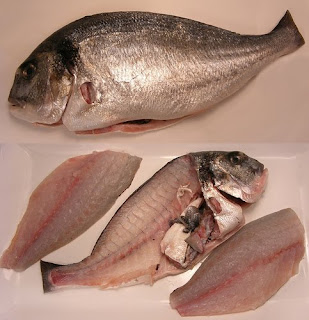Grow Fish In Your Basement

Turned off by high seafood prices? Maybe the future of seafood is next to the washing machine or the water heater in your basement. It might seem like a far fetched idea, but it is one that increased transportation costs could bring closer to reality. The article below appeared in a recent Mother Earth News.
USA.- For the past several years, the good folks at the Institute for Local Self-Reliance in Washington, D.C. have worked to help urban residents gain greater control over their lives through the use of low-technology, decentralist tools and concepts.
[2008-02-22]We strongly believe that more people (city dwellers and country folk alike) should be exposed to the Institute's admirable efforts... which is why we've made this "what's happening where" report by ILSR staffers one of MOTHER'S regular features.
Raising fish in the basement—as a means of producing a home supply of inexpensive protein—is an enticing idea to urban and rural dwellers alike... especially now that overfishing (coupled with the pollution of many spawning and feeding areas) has led to higher seafood prices.
Fish can , of course, be grown in basements (as Dr. Fernwood Mitchell proved when he raised rainbow trout in his Washington, D.C. cellar). Such closed systems, however, require perpetual filtering and aeration of the water, constant temperature control, and regular supplemental feedings... and they'll only be worthwhile when transportation expenses become so high that basement growing, with all of its costs, becomes economically competitive with our present commercial fisheries.
On the other hand, not all aquaculture is as intensive and financially prohibitive as are basement systems. Ocean ranching is a good example of the other "fin farming" extreme. Salmon hatcheries on our northeastern and northwestern coasts release millions of juveniles each year... fish that are subsequently harvested by both commercial boats and sports anglers. (The Lummi Indians of Bellingham, Washington—who use their trout and salmon hatcheries as a spur to encourage community economic development—produce nearly five million fingerlings a year.)
In addition, there's an extension of ocean ranching—a system that's appropriate for a wider variety of species—in which the juveniles are released into a partially enclosed environment... one that can receive some management. Known as parc culture , this system was initially developed to grow oysters in Brittany's tidal flats, but is now being used in many American shellfish beds. And—for more mobile forms of marine life—gates can be used to retain the finned groups in the "cropped" bay, tidal flat, or whatever.
Raft culture provides still another fish farming alternative. By growing mussel colonies on rafts anchored in the middle of an unpolluted estuary, Ed Meyers of Damariscotta, Maine is able to raise the shellfish for less than 20¢ a pound!
Ponds are, therefore, the best hope for city fish farming. Such small "lakes" can take advantage of the energy available from solar radiation... the higher temperatures of the urban environment... and, perhaps, even wind power to provide water circulation.
Source: Mother Earth News


Comments